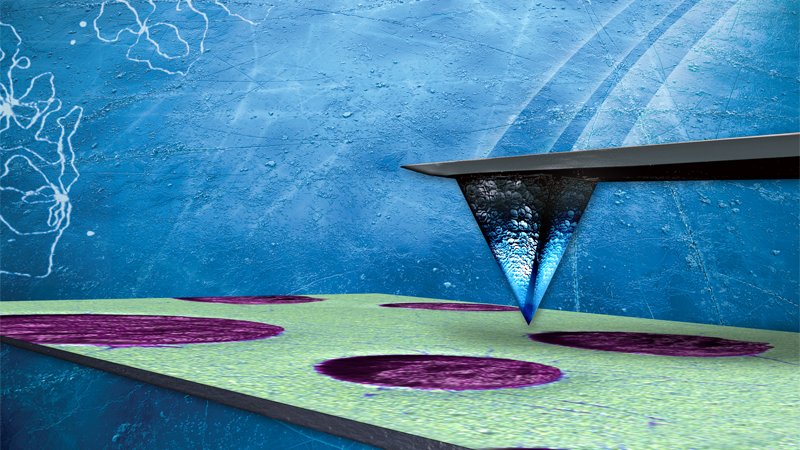PeakForce MFM
PeakForce MFM is a significant advancement in the field of high-resolution magnetic imaging, offering superior spatial resolution, enhanced sensitivity, added data channels, and the ability to image delicate samples with greater precision. Conventional Magnetic Force Microscopy (MFM) uses two passes for each scanline, a Bruker methodology termed LiftMode™. The first pass to map topography is conventionally conducted in TappingModeTM. Replacing that initial TappingMode scan with Bruker’s PeakForce Tapping® mode results in PeakForce MFM.
To maximize sensitivity and spatial resolution, Bruker has developed specialized PFMFM-LM probes ideal for PeakForce MFM. The high performance of this new probe/mode combination is evidenced in the hard drive images shown.
PeakForce MFM:
- Achieves higher sensitivity and spatial resolution than conventional MFM
- Extends sample applicability
- Leverages PeakForce QNM® to correlate mechanical and magnetic data collected during the same imaging sequence
- Exhibits high repeatability and is easy to use, owing to Bruker’s ScanAsyst® operation algorithm for parameter optimization


